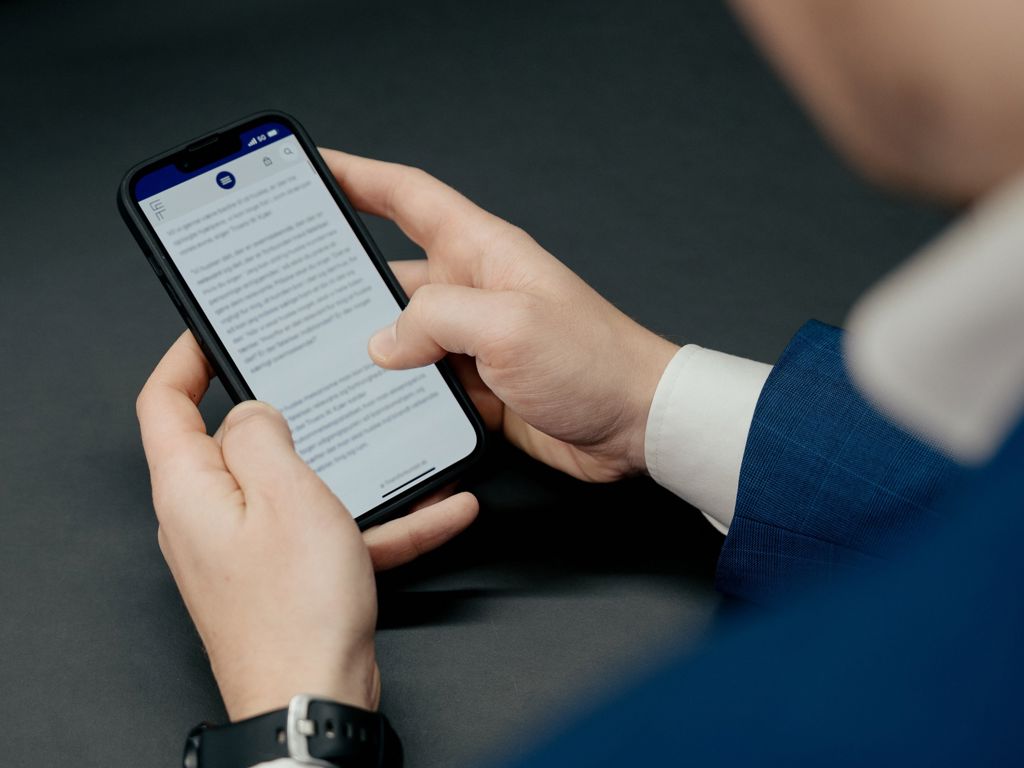How to write a successful job application
Get advice and be guided on how to write a job application which will make the best possible impression.
You have just seen your dream job advertised. What do you do?
Step 1: Read the advertisement several times
The more times you read the job advert, the more distinct the job appears to you, and you will be able to identify which additional information is needed to give you a complete picture of the job content.
To understand specifically what the job entails, note the following in two different columns:
- What tasks/projects will be your primary responsibilities as part of the job?
- Which skills (both professional and personal) does the organisation believe to be the most important to be able to perform the tasks? The organisation may emphasise that you must have acquired such skills either from practical or theoretical experience (or both).
Step 2: Phone the organisation
Unfortunately, not all organisations are good at expressing exactly what they need. And it may be somewhat of a challenge to write a job advertisement which covers it all. Typically, an HR employee will draw up the job advertisement on behalf of the recruiting manager. This requires the HR employee being properly introduced to the job function, which is not always the case.
But if you are to prepare an application matching exactly what the manager is looking for, it is important that you become fully acquainted with the job. This will help you in your effort to write a successful application but it is also important for you to decide whether the job is, in fact, the right job for you.
It may therefore make perfect sense to phone the recruiting manager and ask for more details about the job. Such conversation may provide you with invaluable knowledge as to which areas should be given priority in your application. But remember: Don't just phone because you have heard you should, and don't ask questions that are already answered in the advert.
Make sure that you prepare a few good questions that are not answered in the advertisement.
Examples are:
- What results do you expect me to achieve and how quickly?
- Which 1-2 skills are given the highest priority?
- How will my performance be measured in the first six months?
- Which tasks/projects will take up most time?
- What are the main criteria of success for the job?
Step 3: Draw up an outline for your text
When you have gained sufficient knowledge about the job, you can start writing your application.
As a guide, the application should not exceed one page (maximum one and a half pages). It may be beneficial to keep the following ‘invisible structure’.
A catchy subject line will help your application stand out in the pile. So, avoid putting just the job title in the subject line or writing ‘Regarding application for the job of... ‘. It is too unoriginal.
Below are five examples of different subject lines for an application:
- Internal auditor who decodes the accounts and delivers quality on time
- Bright analytical business developer capable of leading a digital transformation
- Reliable customer consultant with a systematic approach and strong sales skills
- Organisational consultant specialised in facilitation of management teams and learning processes
- Innovative and independent communicator with a passion for challenges
The introduction should be used to explain why this specific organisation and this particular job are the perfect match for you. Recount what the organisation represents and why exactly that appeals to you. Or specify the value/difference you would add to the organisation/job.
Feel free to briefly provide evidence (a maximum of 2-3 lines) of why the job is the perfect fit for you. This could be pointing out, for example, that you would be able to bring both your management experience and your expert knowledge into play – two areas in which your contribution would be passion and value.
Your introduction should preferably include an example of what drives you the most in a work context. Here is an example of how you could put this.
"Like you, I am passionate about developing offers for digital learning which move and involve the recipient. In that connection, my degree in didactics and ten years of hands-on teaching experience with high evaluation rates serve me well".
A good application should be personal and, not least, show your motivation.
The main content should support your introduction, which provided an example of your value. You may, for example, specify other tasks that you have performed, your strongest professional skills in the areas offered as well as provide concrete examples of successful projects completed and results that you have achieved in the past and which are relevant to this job.
You must also briefly introduce yourself as a person. Describe yourself as an employee; how you collaborate with others and which personal strengths and characteristics you will bring to the table at your workplace or in the job.
It is always a good idea to give very specific examples of how your professional and personal skills are expressed. It is about describing exactly how your skills would add value to both the organisation and the job. It will not seem credible if you simply list a number of skills without describing how these skills will benefit the organisation, in fact, it might come across as a cliché.
If you are looking for a management position, you must also briefly touch on your managerial experience (theoretical and practical), managerial results and management style.
Keep your descriptions forward-looking to ensure they provide an image of you in the advertised job.
Towards the end of the application, you may ‘persuade’ your reader with other relevant experience and skills you would bring to the table and which are just what they need. Write that you would like to elaborate at a personal interview. Last but not least, write that you are looking forward to hearing from them.
Step 4: Write your text
When writing your text, it is important that your application is 100% targeted at the advertised job and provides an overall description of your career so far.
It should be a careful selection of what you excel at and have experience with, matching exactly what the company is looking for according to the job advert.
Your CV is to provide a slightly broader picture of your career. If you want inspiration on how to prepare a professional CV, click on this link.
Write your application in the present tense and use active phrases. Avoid long and parenthetical sentences and empty words. Feel free to use headlines and space between the three sections in your application.
Make sure the formalities are correct, for example, the name of the person to submit the application to, including a number for the position, if any, the date of the application and your own contact information.
You should only provide names of references, attach educational certificates, references, etc. if you are specifically asked to do so.
The layout of your application should be professional and attractive. Your application should match the layout of your CV.
Receive feedback on your job application
Increase your chances of securing a job interview by getting professional feedback on your job application and your CV from a career adviser. It doesn’t matter if you are applying for an advertised vacancy or sending an unsolicited application.
Read how hereUnsolicited applications
There is a huge difference between preparing an application for a job that has not been advertised (an unsolicited application) and preparing one for an advertised job, where a description of the vacant position is available.
It may be a good idea to send unsolicited applications to companies that you really want to work for as, in that way, you are not competing with other applicants.
If you want to write an unsolicited application, you should be sure to make it sharp and specific in relation to the responsibilities and tasks you are looking for in the company in question. You should also explain how you will add great value in the area. You should help the reader of your application (typically HR staff) to know which area of the company that is of interest to you and where you add value.
An unsolicited application requires you to make a thorough analysis before writing the application, the reason being that you don’t have a concrete description of what the company needs. You will therefore have to find out first what challenges the company is facing and might need help with. You should conduct a research of it either at the company or with the help of people with in-depth knowledge of the company.





